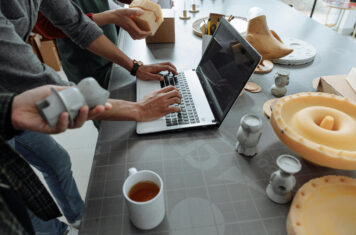A quick look at the applications of 3D printing
Source: LetsGoDigital added 07th Oct 20243D printing becomes more popular and more common. It is used for many applications in various branches. You can read all about it here.
The majority of readers might not realise that the first 3D printer was introduced as far back as 1984. At the time, this was an extremely new technology, and the associated applications were limited. The process was also quite expensive; severely limiting the amount of public recognition that such systems obtained.
3D printing has now become commonplace. Costs have lowered to the point where average individuals are taking advantage of what this unique approach has to offer. Let’s take a look at some applications of 3D printing to better understand what the not-so-distant future may have in store.
Medical applications
This is perhaps the most surprising observation. Many professional-grade 3D printers are capable of accurately reproducing devices used throughout the medical community. Some examples include modelling cancerous tumours, manufacturing prosthetic limbs, and even creating personalised dentures. Furthermore, the production methods can be carried out in a fraction of the time that traditional techniques would otherwise require.
The construction sector
Believe it or not, this technology has also “cemented” its presence within the construction industry. Reputable firms are beginning to appreciate the role that a modern 3D cement printer can play. This is particularly the case when referring to prefabricated structures (such as the footings of a large building). Decreased production times provide a cost-effective edge for customers, and accuracy is never called into question. There is little doubt that 3D printing will enjoy a pronounced presence throughout the entire sector.
Architecture models
One of the main benefits that 3D printing offers involves the accuracy with which products can be manufactured. This is why architects are leveraging such advanced methods. As opposed to creating a model of a large building by hand, they can now employ this type of printing in tandem with software bundles such as CAD. The end result is the ability to enjoy results within a short period of time without having to be concerned about possible errors. When combined with other systems such as artificial intelligence, and augmented reality (AR), 3D printing is expected to become even more commonplace.
There may indeed come a day when 3D printers become as commonplace as traditional accessories such as inkjet or laser printers. This primarily depends on the cost of these devices, as well as the end-user applications. Considering how ubiquitous these units have become over the past decade, most experts agree that the entire 3D printing industry will experience a bright (digital) future.
Ilse is a Dutch journalist and joined LetsGoDigital more than 15 years ago. She is highly educated and speaks four languages. Ilse is a true tech-girl and loves to write about the future of consumer electronics. She has a special interest for smartphones, digital cameras, gaming and VR.
media: LetsGoDigital
Related posts
Notice: Undefined variable: all_related in /var/www/vhosts/rondea.com/httpdocs/wp-content/themes/rondea-2-0/single-article.php on line 88
Notice: Undefined variable: all_related in /var/www/vhosts/rondea.com/httpdocs/wp-content/themes/rondea-2-0/single-article.php on line 88
Related Products
Notice: Undefined variable: all_related in /var/www/vhosts/rondea.com/httpdocs/wp-content/themes/rondea-2-0/single-article.php on line 91
Warning: Invalid argument supplied for foreach() in /var/www/vhosts/rondea.com/httpdocs/wp-content/themes/rondea-2-0/single-article.php on line 91
